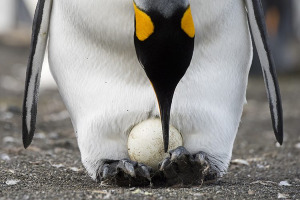
When people think of climate change, they may picture polar bears not having enough ice to stand on and drowning. But recently, only two chicks out of a population of 40,000 Adelie penguins survived, officially placing this species on the endangered species list. The reasons for why this happened are more complicated then rising sea levels.
Since the late 1970’s, climate change has affected the environment. Although some people still think that climate change is natural, most scientists agree that there is a human component to it. For example, when people use cars that run on fossil fuel like oil, this emits carbon dioxide, which causes heat to be trapped in the Earth’s atmosphere. This then spurs ice to melt and water levels to rise. Rising ocean levels causes problems all over the world with flooding. Climate change also results in more storms and hurricanes. These factors affect the habitat of animals all over the antarctic.
Penguins are fascinating creature. Semi-aquatic birds that primarily live in cold climates like Antarctica, some also live in warmer climates, like the South African penguin. There are 17 different breeds of penguin ranging from the Small Penguin that is just over a foot tall to the Emperor Penguin that can grow up to four feet tall.
The effects of climate change are taking a toll on penguins. For their egg to survive, the male must hold it on his feet to keep it from touching the ground and freezing. The female goes out and catches fish for the male while he takes care of the egg. Because of overfishing and climate change, the female how has to go farther and takes longer for her to come back with food. Eventually, some males give into their hunger and leave the egg. If the male keeps the egg alive and it hatches, it must stay dry to stay warm. But if ice melts and the chick gets wet, it will get hypothermia and die.
Why is it getting harder for female penguins to find food? It is because of krill. The loss of krill is also an effect of global warming. When ice melts
and the oceans rise, the single-celled organisms krill primarily feed on
are disrupted and spread apart. This makes it harder for krill to eat,
which in turn leads to their starvation and death. And fewer krill send ripple effects into the whale population.
Whale populations have increased ever since laws were put in place to help the dwindling species. A majority of a whale’s diet is krill. So, with more whales, there is less krill, which are also a main part of a penguin's diet. Further, because of the growing number of whales and the shrinking number of krill, penguins have become a snack more often for whales.
A small change to one species can have a large effect on a different one. The effects of climate change are not always obvious.
[Sources:
Theguardian.com
;
National Geographic
]

